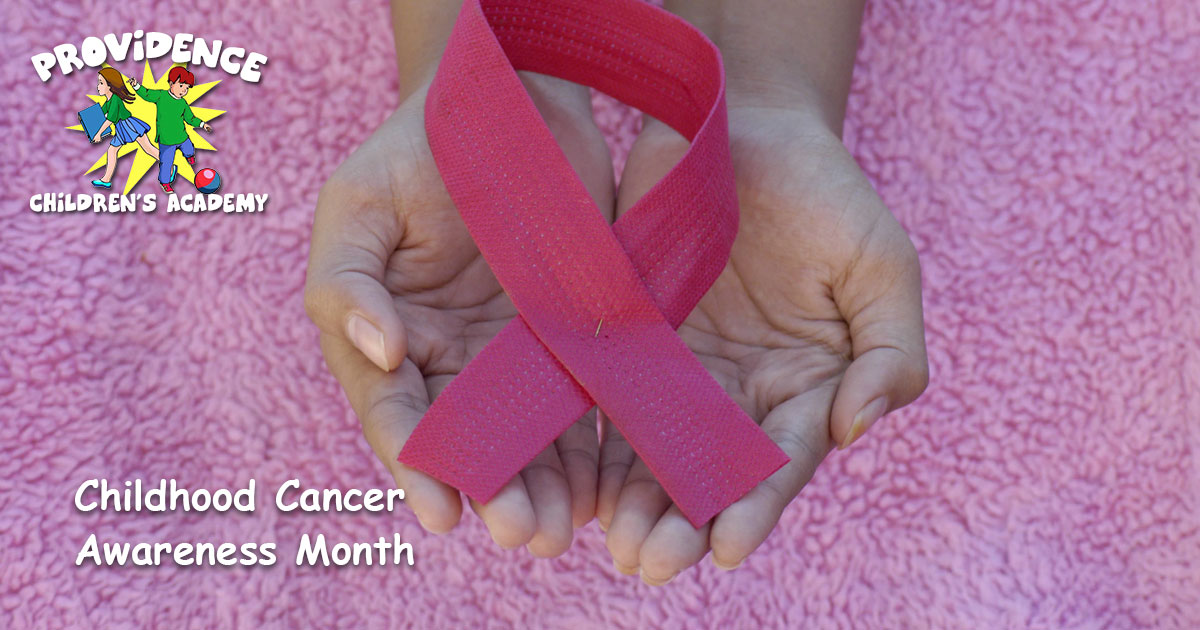
Every September since 2012 has been marked as Childhood Cancer Awareness Month. A cancer diagnosis is devastating to children, families, and their community. With over 400,000 cases diagnosed every year around the world, it’s important to take the time to honor and celebrate the lives of those affected. We at Providence Children’s Academy want to recognize Childhood Cancer Awareness Month and help keep us all educated and advocating for childhood cancer research.
Why Childhood Cancer Awareness Is So Important
You might hear a lot about cancer awareness, but unfortunately the nature of childhood cancer requires its own study and funding. It can be difficult to spot until it’s too late, and the emotional, physical, and financial challenges often last past the start of remission.
The Difference Between Adult and Childhood Cancer
The first major difference is the type of cancer adults and children get. In adults, the most common cancers are lung, breast, prostate, and colorectal cancer. Children, on the other hand, are more often diagnosed with brain tumors, leukemia, sarcomas, and lymphomas. Because each cancer is generally treated as unique, cancer research needs to cover as much as it can. There are also several types of cancer which tend to only appear in children, making cancer research a difficult task.
Secondly, cancer tends to progress much faster in children than it does in adults. Catching the early signs and symptoms is of paramount importance and starting treatment as soon as possible. Even the same type of cancer can behave differently in a child than it does in an adult, so specialized care needs to be given at a pediatric cancer center.
Looking Out for Symptoms
Unfortunately, cancer in children can be difficult to spot early. A child may not be able to fully communicate an issue, or the symptoms can get mixed up with growing pains or other common illnesses. Nevertheless, there are some key signs to watch out for, especially if your family has a history of cancer. The American Childhood Cancer Organization (ACCO) recommends a visit to your child’s pediatrician if they present any of the following symptoms:
- Bruising easily
- A lump or swelling (especially if around the abdomen, chest, neck, pelvis, or armpits)
- Ongoing fever, nausea, or vomiting
- Changes in vision
- Pain in one area that doesn’t go away
- Headaches
- Loss of energy
- Limping
- Fast weight loss
- A white color behind the pupil
Offering Support and Awareness
A fantastic number of children recover from childhood cancer thanks to effective treatment and advancements in medical technology. However, the long-lasting effects of a diagnosis can remain for the rest of someone’s life. Charities like the ACCO aim to offer support to families struggling after a cancer diagnosis.
Continued research and data collection is essential, and with awareness and advocacy, childhood cancer care can be improved. The gold ribbon has been the symbol of childhood cancer awareness since 1997, and it’s the simplest way to show your support. The ACCO sell ribbons, pins, and merchandise in their online store, with all profits going directly back into supporting affected families.
You can also spread awareness by creating your own gold crafts! Decorate with a gold permanent marker, or dress in gold clothes. Being aware of the early signs can help you keep your own family safe, as well as being able to provide support to others. Keep an eye out for local and online events held during Childhood Cancer Awareness Month and see how you can support your community.
